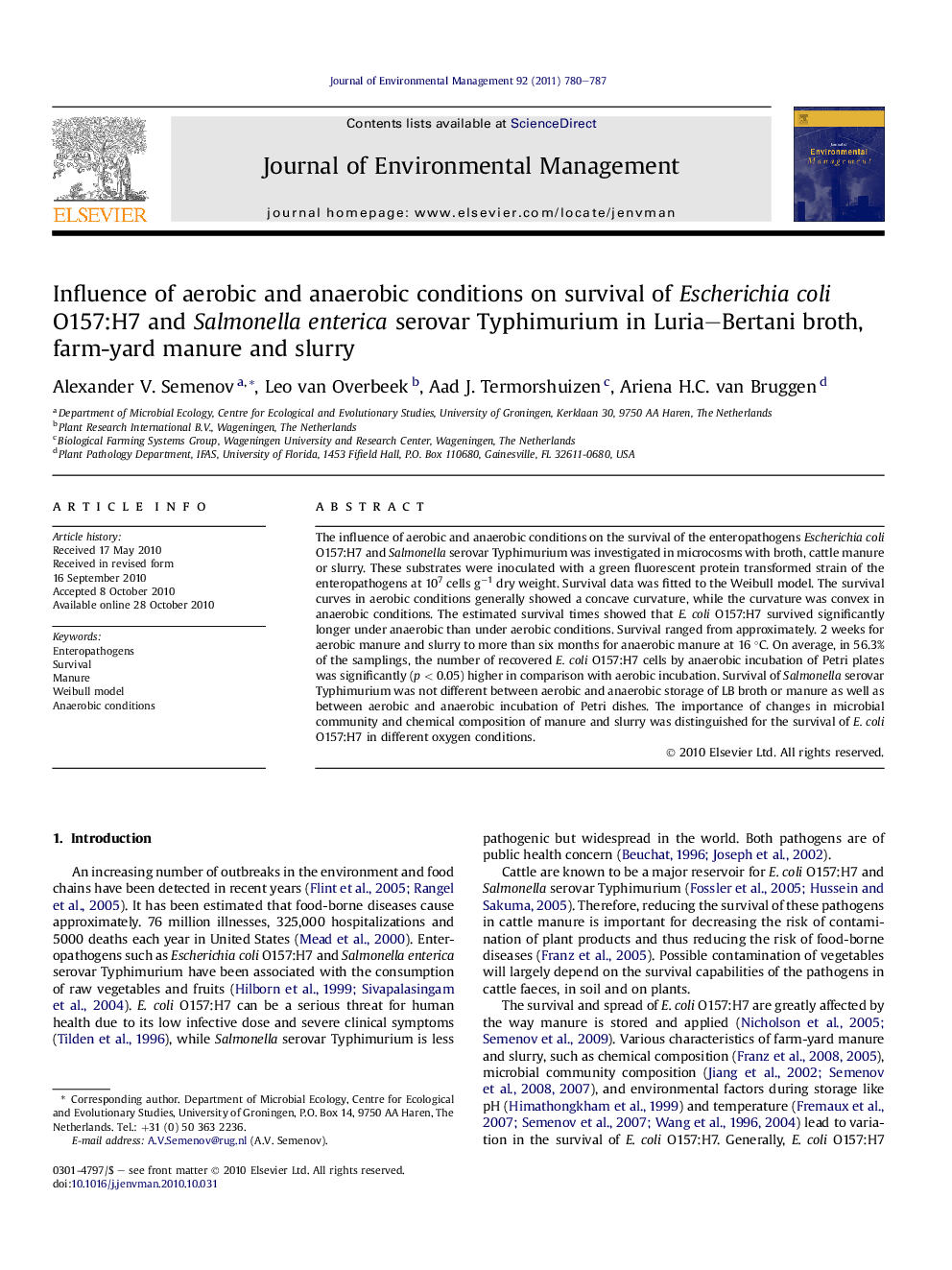| Article ID | Journal | Published Year | Pages | File Type |
|---|---|---|---|---|
| 10505541 | Journal of Environmental Management | 2011 | 8 Pages |
Abstract
The influence of aerobic and anaerobic conditions on the survival of the enteropathogens Escherichia coli O157:H7 and Salmonella serovar Typhimurium was investigated in microcosms with broth, cattle manure or slurry. These substrates were inoculated with a green fluorescent protein transformed strain of the enteropathogens at 107 cells gâ1 dry weight. Survival data was fitted to the Weibull model. The survival curves in aerobic conditions generally showed a concave curvature, while the curvature was convex in anaerobic conditions. The estimated survival times showed that E. coli O157:H7 survived significantly longer under anaerobic than under aerobic conditions. Survival ranged from approximately. 2 weeks for aerobic manure and slurry to more than six months for anaerobic manure at 16 °C. On average, in 56.3% of the samplings, the number of recovered E. coli O157:H7 cells by anaerobic incubation of Petri plates was significantly (p < 0.05) higher in comparison with aerobic incubation. Survival of Salmonella serovar Typhimurium was not different between aerobic and anaerobic storage of LB broth or manure as well as between aerobic and anaerobic incubation of Petri dishes. The importance of changes in microbial community and chemical composition of manure and slurry was distinguished for the survival of E. coli O157:H7 in different oxygen conditions.
Related Topics
Physical Sciences and Engineering
Energy
Renewable Energy, Sustainability and the Environment
Authors
Alexander V. Semenov, Leo van Overbeek, Aad J. Termorshuizen, Ariena H.C. van Bruggen,
